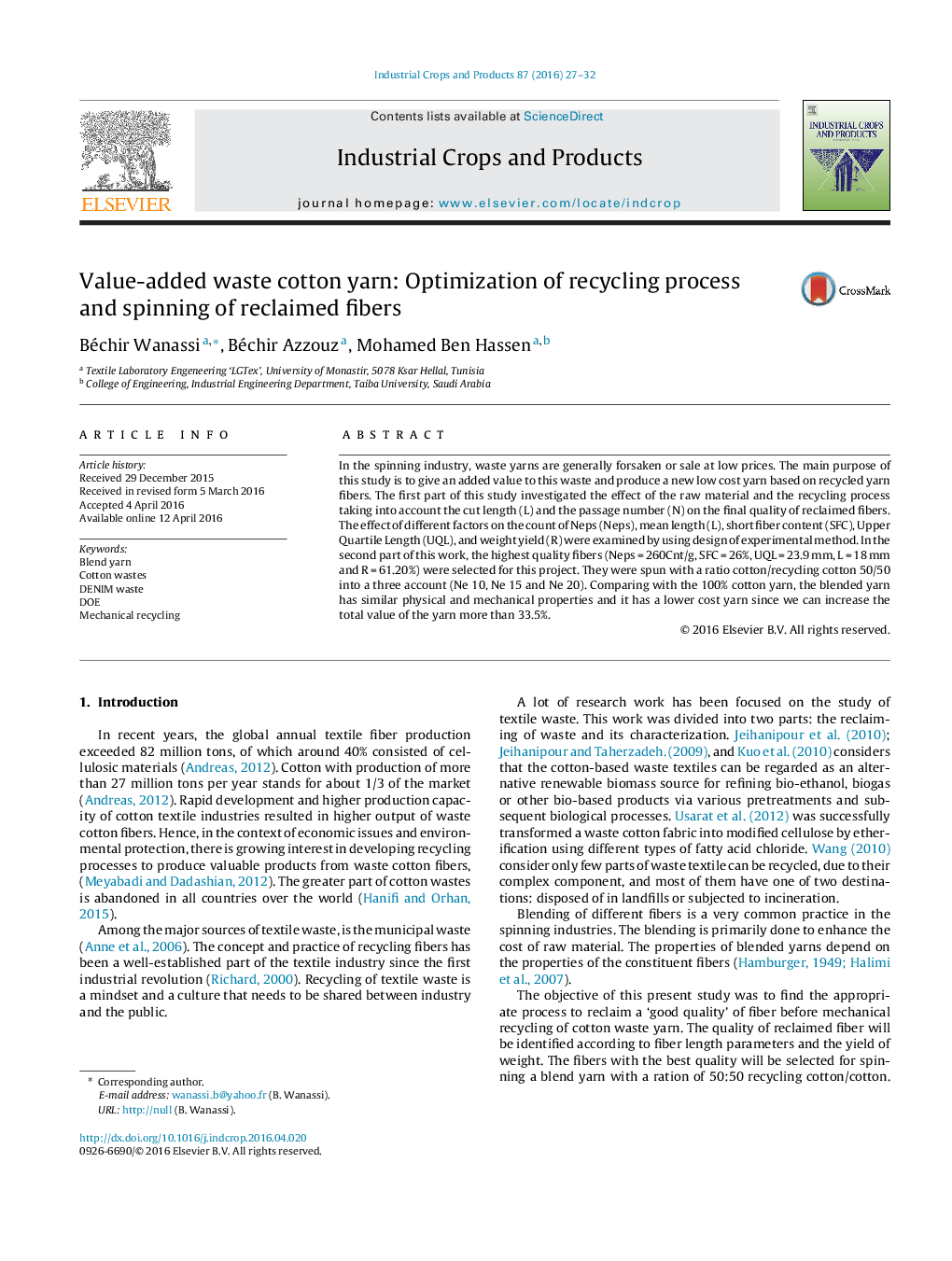| Article ID | Journal | Published Year | Pages | File Type |
|---|---|---|---|---|
| 4512264 | Industrial Crops and Products | 2016 | 6 Pages |
•The yarns wastes is subjected to mechanical action to make it into a fibrous form.•Give a high added value to the waste yarn.•Using experimental design method to optimize the quality of the recycled fibers.•Understand the effect of factors on the quality of reclaimed fibers.•The cost of manufacturing of 50:50 blended yarns was studied.
In the spinning industry, waste yarns are generally forsaken or sale at low prices. The main purpose of this study is to give an added value to this waste and produce a new low cost yarn based on recycled yarn fibers. The first part of this study investigated the effect of the raw material and the recycling process taking into account the cut length (L) and the passage number (N) on the final quality of reclaimed fibers. The effect of different factors on the count of Neps (Neps), mean length (L), short fiber content (SFC), Upper Quartile Length (UQL), and weight yield (R) were examined by using design of experimental method. In the second part of this work, the highest quality fibers (Neps = 260Cnt/g, SFC = 26%, UQL = 23.9 mm, L = 18 mm and R = 61.20%) were selected for this project. They were spun with a ratio cotton/recycling cotton 50/50 into a three account (Ne 10, Ne 15 and Ne 20). Comparing with the 100% cotton yarn, the blended yarn has similar physical and mechanical properties and it has a lower cost yarn since we can increase the total value of the yarn more than 33.5%.
